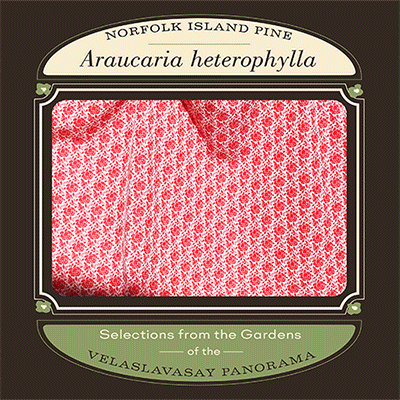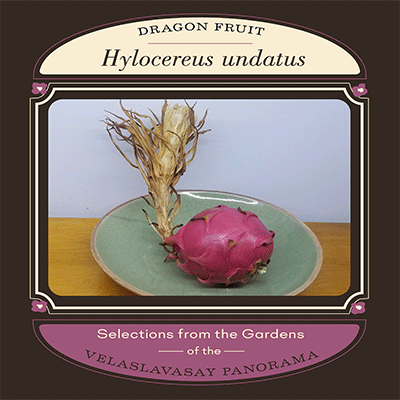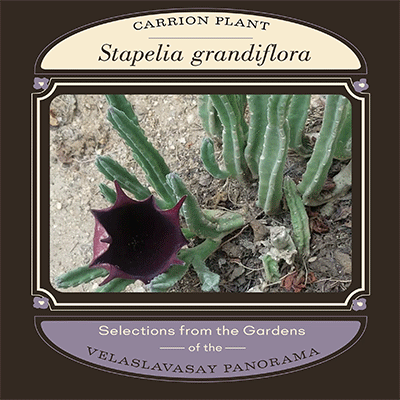Seed Swap of the Suncup

January 30, 2021 is National Seed Swap Day and to celebrate this momentous occasion we offer
. . . .Selections from the Gardens of the Velaslavasay Panorama . . . .
LAGENARIA SICERARIA (pictured above) is known around the world as the calabash, hu lu, jolongbang, cucuzza, doodhi and more. The Bottle Gourd a.k.a. Snake Gourd was one of the first plants to be cultivated for storage instead of food. In Mexico, a dried “acocote” has traditionally been used in the production of pulque - a fermented beverage from the maguey plant. In “bottle” form the gourd resembles a figure “8” which many consider to be lucky. In a traditional Korean wedding ceremony the newly married couple shares wine from a gourd grown by the bride’s mother. Discover the Magic of Gourds!

ARAUCARIA HETEROPHYLLA, also known as the “Norfolk Island Pine” is the symbol on the island’s flag and native to Norfolk Island. These trees can reach heights of above 200 feet and live better with lower temperatures, lots of sunlight, and moist soil.
.
Norfolk Island is home to a cyclorama, which is similar to a panorama, and portrays the history of “Fletcher’s Mutiny." Fletcher Christian was a European who staged a mutiny on HMS Bounty and ended up settling with his fellow mutineers on Norfolk island. His sixth generation descendant Marie Bailey initiated the cyclorama and four artists worked on the popular tourist attraction for two years, creating the painting itself as well as 3-D props like rock and sand. The accompanying soundscape includes traditional Norfolk language and hymns.
DRACAENA TRIFASCIATA, also known as the “Varigated Snake Plant” and “Mother-in-law Tongue,” is native to tropical West African countries from Nigeria to the Congo and is used in some Nigerian rituals to ward off evil. It is thought of as a good luck plant and also a popular houseplant, easy for beginner owners as it is resilient and difficult to kill.
.
It thrives from neglect and requires little watering and care. NASA found the plant improved air quality by removing pollutants, however ingesting all parts of the plant are toxic and can cause severe symptoms so be sure to keep away from children and furry friends. This plant was previously classified as SANSEVIERIA TRIFASCIATA.

HYLOCEREUS UNDATUS is the most cultivated species of the genus Cactaceae. This ornamental vine gives delicate leafy white flowers that bloom at night. If pollinated, the plant will produce a large berry fruit with bright pink scales on the outside and inside a fleshy area of white or red filled with numerous small black seeds. Depending on the region, the fruit is known as “dragon fruit,” “pitahaya,” “pitaya,” and “strawberry pear.” Native to Central and Northern South America (including Mexico), this plant is easy to propagate from cuttings.

STAPELIA GRANDIFLORA, known as “Starfish Cactus” and “Carrion Plant,” is native to South Africa. Unlike cacti, these plants require warm and humid temperatures, akin to a greenhouse environment in order to grow. The name starfish cactus is misleading as they aren’t actually cacti, but are instead succulents that can grow a five petal flower. These flowers can be red to brown, covered in hairs, and mimic the look of carrion. The decaying animal flesh appearance of the color along with the rotting odor released attracts flies that are the main pollinators for this plant.
. . . . Selections from the Gardens of the Velaslavasay Panorama . . . .